Standards of Practice
The International Standards of Practice for inspecting the plumbing system is located at www.nachi.org/sop.
Free, Online Course
To learn more, take InterNACHI's free, online Residential Plumbing Overview for Inspectors Course.
Wall Tile
Observation
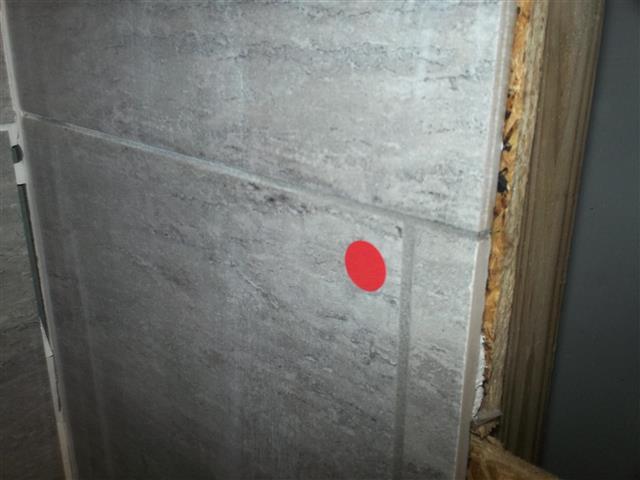
Observation

Observation

Tile is not flat. A cosmetic problem caused by poor installation practice. It indicates work performed by an inexperienced installer and is a sign to look for other problems in other work performed by this installer that may create more serious problems.
Observation
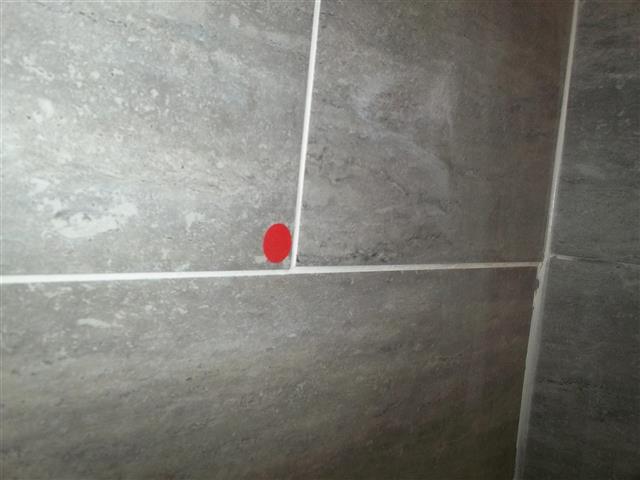
Observation
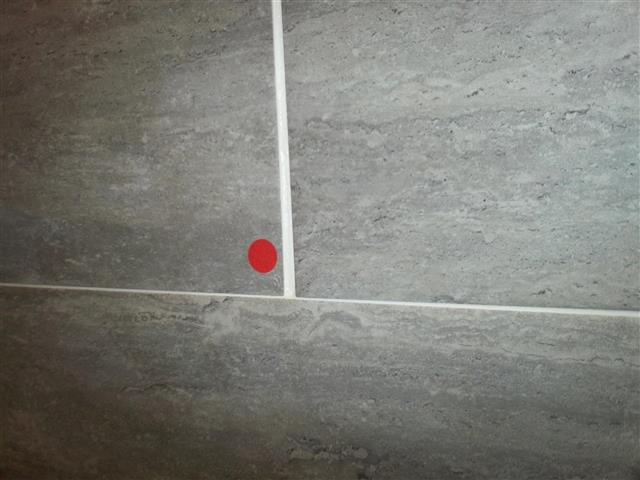
Grout lines are not even. Again, a cosmetic problem caused by poor installation practice.
Observation

Observation

Tile has grout residue on its face. A cosmetic problem caused by poor installation practice.
Observation

Observation
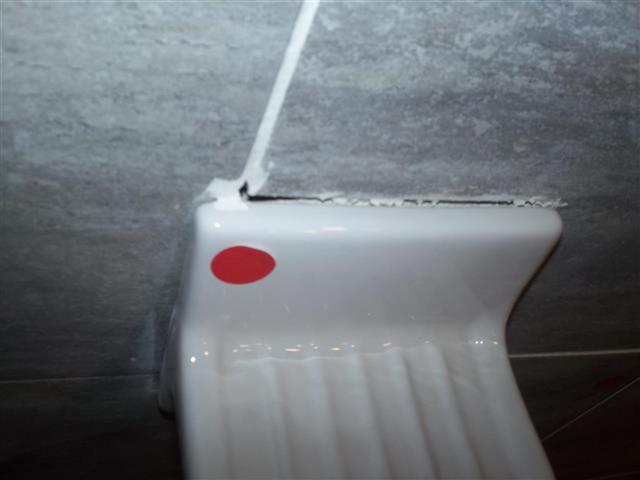
The soap dish is crooked. Gaps around the edge may allow water to penetrate the area behind the tile where it may cause damage and/or deterioration.
Observation

Observation
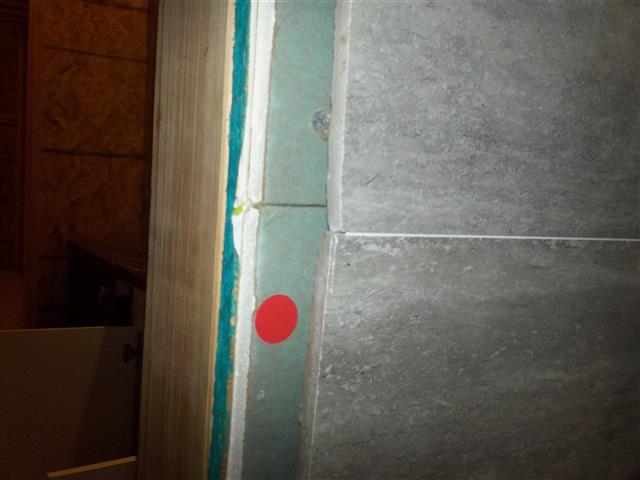
Drywall used as a substrate is improper. It will absorb moisture, which will encourage microbial growth, and which will cause the bond to the tile to deteriorate. Tiles will eventually loosen and detach.
Floor Tile
Observation

Observation

Floor tile is improperly sloped and will cause water to pool at low spots, increasing the chances of water penetrating the tile/grout and causing decay damage to wood floor structure framing.
Observation

Floor tiles are damaged.
Vanity
Observation

Improper standpipe.
Toilet
Observation

Observation

Loose at the floor.
Electric Water Heater
Observation

A shut-off should be installed to allow replacement or repair of the water heater.
Observation

Observation
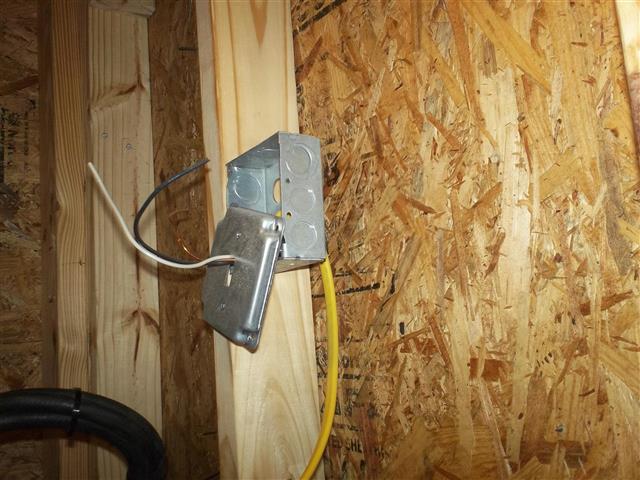
Exposed Inadequately-Supported Conductor.
Whether the conductor may be exposed, or must be installed inside armored cable or conduit varies with jurisdiction and with the potential for exposure to damage.
The conductor must be supported with cable connectors and staples in a manner similar to the rest of the home wiring.
Improper Water Pipe Material
On a dual element residential water heater, both elements do not heat at the same time.
Observation
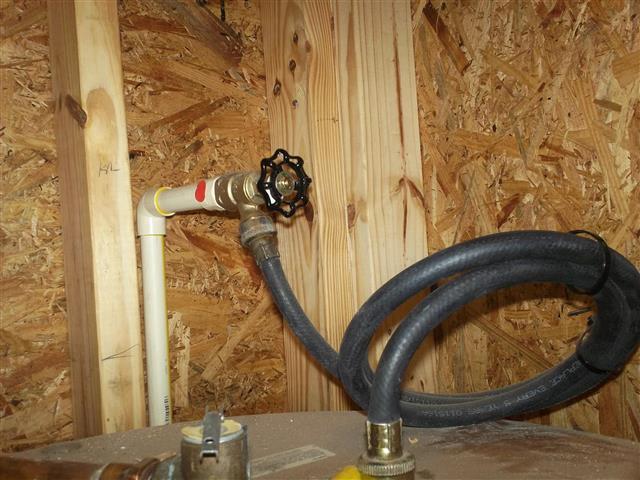
Washing machine hoses are not an acceptable substitute for proper water supply pipe materials.
Observation

Improper Water Pipe Materials, Connections, and Fittings.
Polybutylene (PB) has been installed in buildings across the country. It has been the subject of a large class action suit, and the recommendation is typically for replacement due to high incidence of incipient (early) failure resulting in leaking and damage. Failure has generally been connected with improper crimp installation and the development of cracks due to chemical reaction with supply water in some areas. Also, a hose clamp is an insufficient connection (PB to copper).
Both #1 and #2 have dielectric connections installed but still have different metals in contact with each other. In the presence of moisture, different metals in contact with each other can cause galvanic corrosion. In #1, brass against copper is acceptable, in #2, galvanized steel against copper is not OK. Recommend correction of #2.
Observation
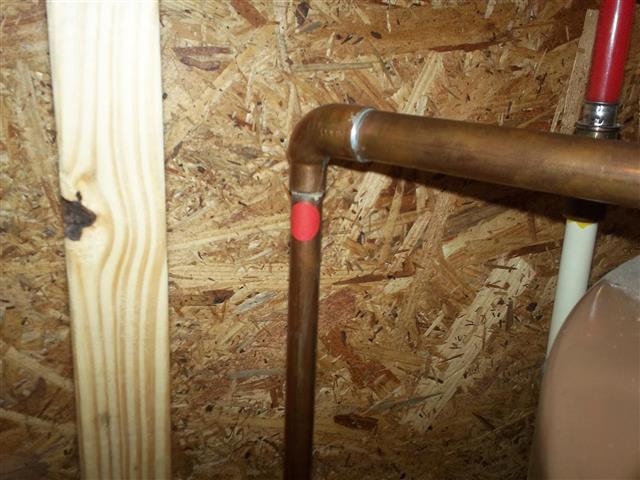
Reduced Diameter of Temperature/Pressure Relief (TPR) Valve Discharge Pipe.
The TPR discharge pipe must not be reduced in diameter form the Valve outlet size. Here, it has been reduced from ¾" to ½".
Observation

Improper TPR Discharge Pipe Termination Height.
To reduce the chances of scalding anyone nearby when the TPR valve activates, TPR discharge pipes should terminate at a height no greater than 6" above the floor.
Note On Water Heater Elements:
On a dual element residential water heater, both elements do not heat at the same time.
Starting with a tank of hot water. When hot water is used, cold water enters the bottom of the tank at the same time. This cools the lower thermostat and the lower element will heat.
If enough hot water is used to cool the upper thermostat the lower element will shut down and the upper element will heat. When the upper thermostat is satisfied it will send the power back to the lower thermostat/ element.
When you use a lot of hot water but it takes a long time to heat back up, the problem is most likely with the upper thermostat/element.
When hot water is depleted quickly, the problem is likely with the lower element/thermostat.
Gas Water Heater
Component Identification
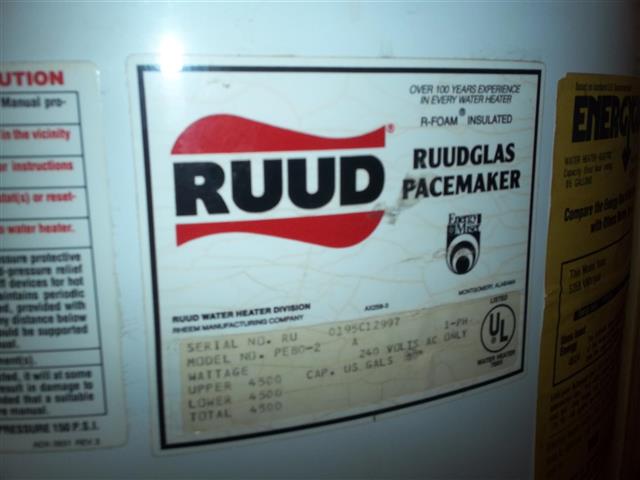
Observation
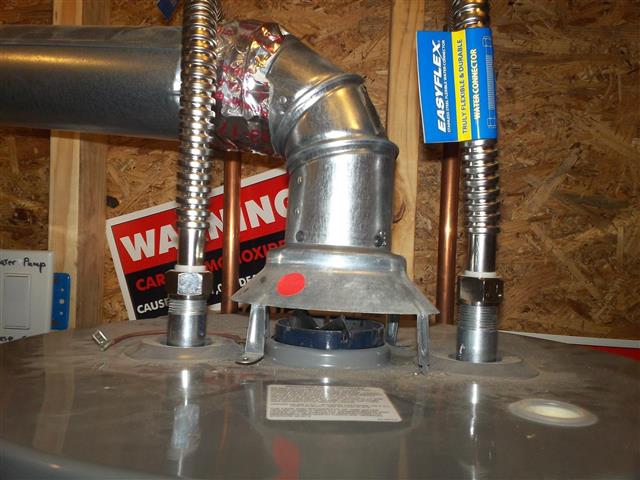
FVIR water heaters have a screen installed in the part of the jacket covering the burn chamber that is designed to prevent the ignition of flammable vapors that might be present near the water heater. An example is gasoline fumes from a gas can stored next to a water heater located in a basement or mechanical room.
Observation

Observation

Observation
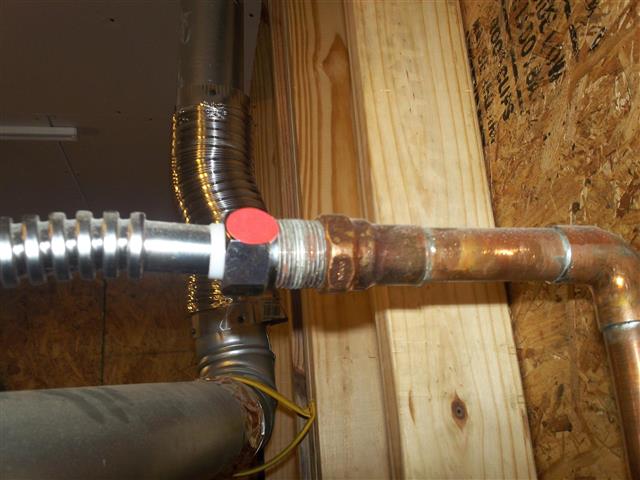
Observation

Different metals in contact with no dielectric union.
In the presence of moisture, galvanic corrosion will occur when different metals are in contact with each other. To avoid galvanic corrosion, a dielectric union (a fitting of a non-conductive material) is installed that interrupts electrical conductivity between the pipes. a. In the presence of moisture, galvanic corrosion will occur when different metals are in contact with each other. To avoid galvanic corrosion, a dielectric union (a fitting of a non-conductive material) is installed that interrupts electrical conductivity between the pipes.
Observation

Improper Dielectric Union.
At the water supply pipe, although a dielectric union has been installed, two different metals are still in contact. Eventually, galvanic corrosion will cause a leak to develop at this fitting. The nipple connecting the two pipes should have been copper.
Observation

No Gas Shut-Off or Sediment Trap.
A shut off should be installed to facilitate gas shut-off during an emergency, or for when the water heater is disconnected for replacement or repair.
A sediment trap is designed to keep particles out of the gas valve.
Observation

Temperature/Pressure relief (TPR) valve discharge pipe termination is not visible.
The termination of a TPR discharge pipes should be visible so that it can be visually verified that the end has not been capped or otherwise flow-restricted.
Observation
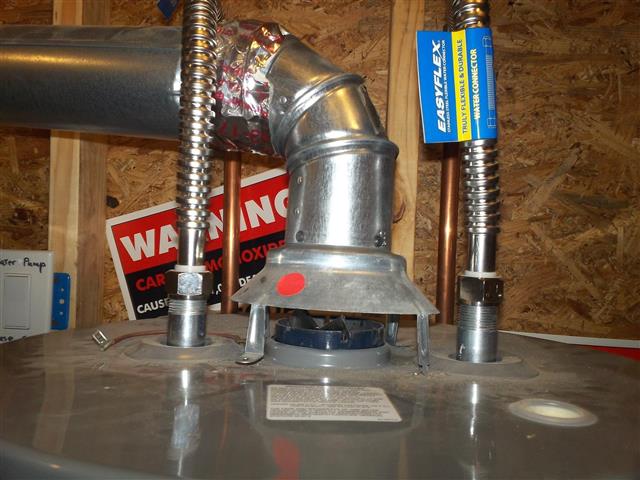
Disconnected draft hood.
The draft hood serves two purposes:
- It neutralizes stack effect by keeping the burn chamber at atmospheric pressure. In other words, it helps prevent excessive updrafts and downdrafts in the combustion exhaust vent that might affect the combustion process in the burn chamber.
- It provides dilution air. Dilution air lowers the temperature of combustion gases. Reducing the temperature difference between the hot combustion gasses and the cool exhaust vent also reduces the potential for the development of condensation that can corrode the vent and/or the water heater.
- It provides an avenue for exhaust spillage in the event of a blockage such as a bird's nest.
Observation
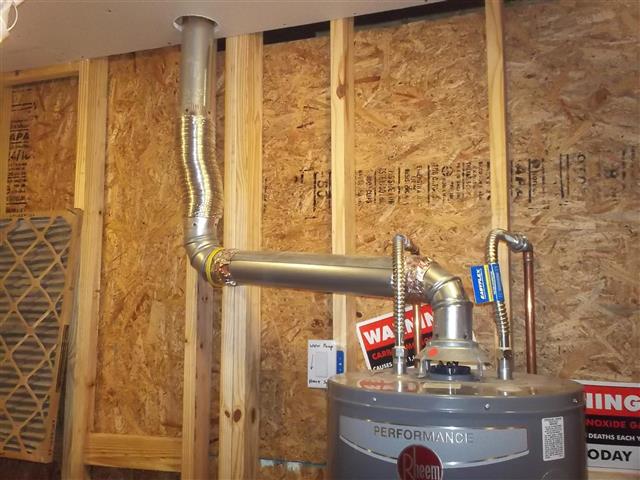
Improper Exhaust Vent Configuration.
- Reverse slope; the vent should slope up from the draft hood at and angle of at least ¼" vertical rise per foot of horizontal run.
- Taped connections. In most jurisdictions, aluminum tape alone is not adequate for making connections, but may sometimes be installed to help hold screws in place.
- Flexible, ribbed dryer vent is not an acceptable material for venting water heater combustion gasses. It is not designed to withstand the temperatures generated by gas combustion. Also, at any connection in which one section fits inside another, the lower section should be inserted inside the upper. The reverse has been done here.
- Inadequate clearance for combustibles.
i. Double-wall vent requires a 1-inch clearance from combustibles.
ii. Single wall vent requires 6-inch clearance from combustibles.
Observation

Observation

Improper vent support. The metal vent should not be supported by a vinyl strap, which is combustible.
Observation
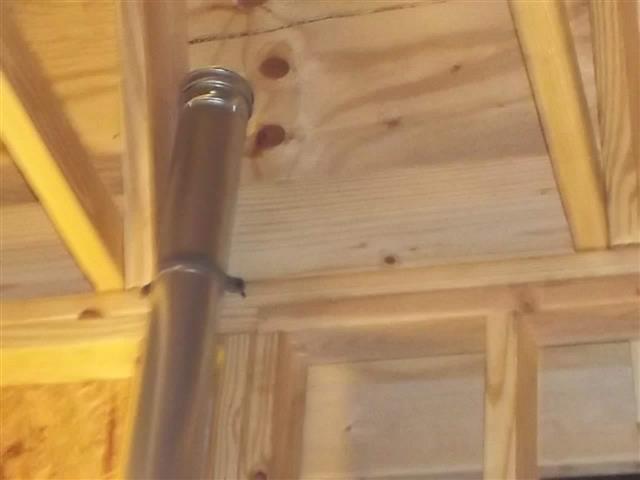
Combustion exhaust vent terminates in the attic.
This condition could allow the toxic products of combustion to enter the living space. All combustion vents must terminate "at" (not "near") the exterior.
Additional Resources
Read about Bathroom Ventilation Ducts and Fans.
